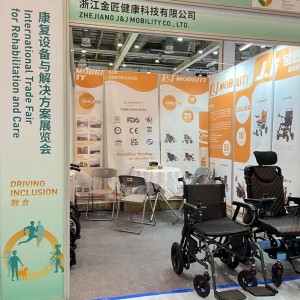Understanding How a Power Wheelchair Functions
Power wheelchairs, despite their variety in the market, share fundamental structural components: motors, motor drivers, and control systems. Because these wheelchairs operate on the ground, they prioritize torque over speed. To increase torque and decrease motor speed, a reduction gear is typically attached to the motor. Most power wheelchairs use DC motors equipped with Hall sensors and code disc signals. The Hall signal manages motor commutation, while the code disc signal provides motor speed feedback. Generally, a four-wheel drive system ensures stability and precise operation. Real-time monitoring of parameters like speed and torque, paired with effective control algorithms, enables the power wheelchair to operate smoothly and efficiently.
User-Friendly Operating Platform
A power wheelchair must respond seamlessly to user commands. The electrical control system includes an interface allowing users to input instructions such as setting motor speed, choosing the travel direction, or selecting a movement mode.
Motor Rotation Aligned with User Instructions
Once a user sets commands for speed or torque, the controller calculates the appropriate values for each motor using kinematic and dynamic equations. This aspect is vital, as it coordinates the communication between the main controller and motor drivers, ensuring precise movement and control.
Real-Time Motor Status Feedback
The main controller not only directs motor operations but also continuously monitors feedback, such as speed and torque. By reading these values in real time, the controller can adjust the wheelchair’s movement and maintain optimal performance using advanced algorithms.
Display of Wheelchair Parameters
To ensure effective operation, the system provides real-time displays of speed, acceleration, and battery level. This information is essential for both operational efficiency and maintenance, as it reminds users to recharge the battery when needed and tracks performance metrics.
Advanced Safety Protection
Power wheelchairs often encounter obstacles. To prevent collisions and potential damage, they use sensors to measure the distance from obstacles and make necessary adjustments. Additionally, if a wheel becomes stuck, the motor’s current can spike dangerously. In such cases, an emergency stop mechanism activates to protect the motor and battery from damage.
These features illustrate the essential functions of a power wheelchair. If you’re interested in learning more or need assistance in choosing a reliable electric wheelchair manufacturer, feel free to reach out to us.
Post time: Nov-13-2024


